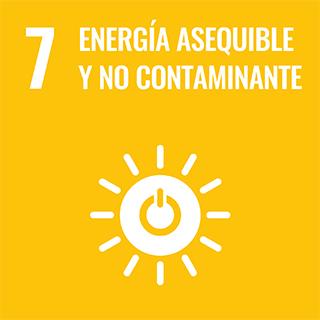
Indexed in
License and use

Grant support
The SFC project has received funding from the European Union's Horizon 2020 research and innovation program under grant agreement No 847593. The DisCo project has received funding from the Euratom research and training program 2014-2018 under grant agreement No 755443. The DisCo project has also benefited from financial support from project partner organizations as well as Waste Management Organizations involved in the project. We are grateful to all DisCo project participants who have performed the experiments and modeling.
Impact on the Sustainable Development Goals (SDGs)

Analysis of institutional authors
Ruiz-Hervias, JesusAuthorSpent nuclear fuel management, characterisation, and dissolution behaviour: progress and achievement from SFC and DisCo
Publicated to:Epj Nuclear Sciences & Technologies. 9 13- - 2023-02-21 9(), DOI: 10.1051/epjn/2022029
Authors: Sjoeland, Anders; Christensen, Petra; Evins, Lena Zetterstrom; Bosbach, Dirk; Duro, Lara; Farnan, Ian; Metz, Volker; Zencker, Uwe; Ruiz-Hervias, Jesus; Rodriguez-Villagra, Nieves; Kiraly, Marton; Schillebeeckx, Peter; Rochman, Dmitri; Seidl, Marcus; Dagan, Ron; Verwerft, Marc; Herranz Puebla, Luis Enrique; Hordynskyi, Dmitri; Feria, Francisco; Vlassopoulos, Efstathios
Affiliations
Abstract
SFC is a work package in Eurad that investigates issues related to the properties of the spent nuclear fuel in the back-end of the nuclear fuel cycle. Decay heat, nuclide inventory, and fuel integrity (mechanical and otherwise), and not least the related uncertainties, are among the primary focal points of SFC. These have very significant importance for the safety and operational aspect of the back-end. One consequence is the operation economy of the back-end, where deeper understanding and quantification allow for significant optimization, meaning that significant parts of the costs can be reduced. In this paper, SFC is described, and examples of results are presented at about half-time of the work package, which will finish in 2024. The DisCo project started in 2017 and finished in November 2021 and was funded under the Horizon 2020 Euratom program. It investigated if the properties of modern fuel types, namely doped fuel, and MOX, cause any significant difference in the dissolution behavior of the fuel matrix compared with standard fuels. Spent nuclear fuel experiments were complemented with studies on model materials as well as the development of models describing the solid state, the dissolution process, and reactive transport in the near field. This research has improved the understanding of processes occurring at the interface between spent nuclear fuel and aqueous solution, such as redox reactions. Overall, the results show that from a long-term fuel matrix dissolution point of view, there is no significant difference between MOX fuel, Cr+Al-doped fuel, and standard fuels.
Keywords
Quality index
Bibliometric impact. Analysis of the contribution and dissemination channel
The work has been published in the journal Epj Nuclear Sciences & Technologies, and although the journal is classified in the quartile Q3 (Agencia WoS (JCR)), its regional focus and specialization in Nuclear Science & Technology, give it significant recognition in a specific niche of scientific knowledge at an international level.
From a relative perspective, and based on the normalized impact indicator calculated from World Citations provided by WoS (ESI, Clarivate), it yields a value for the citation normalization relative to the expected citation rate of: 1.97. This indicates that, compared to works in the same discipline and in the same year of publication, it ranks as a work cited above average. (source consulted: ESI Nov 14, 2024)
This information is reinforced by other indicators of the same type, which, although dynamic over time and dependent on the set of average global citations at the time of their calculation, consistently position the work at some point among the top 50% most cited in its field:
- Field Citation Ratio (FCR) from Dimensions: 5.94 (source consulted: Dimensions Jun 2025)
Specifically, and according to different indexing agencies, this work has accumulated citations as of 2025-06-15, the following number of citations:
- WoS: 5
- Scopus: 6
- Open Alex: 4
- OpenCitations: 4
Impact and social visibility
Leadership analysis of institutional authors
This work has been carried out with international collaboration, specifically with researchers from: Belgium; Germany; Hungary; Sweden; Switzerland; Ukraine; United Kingdom.


